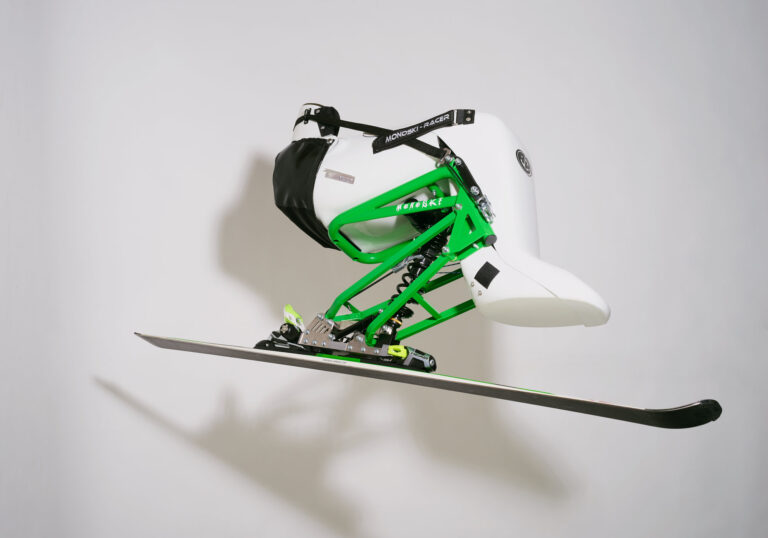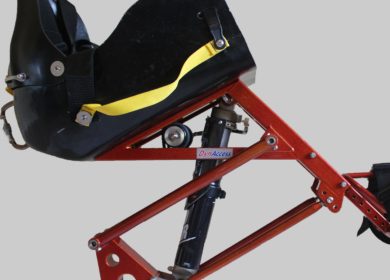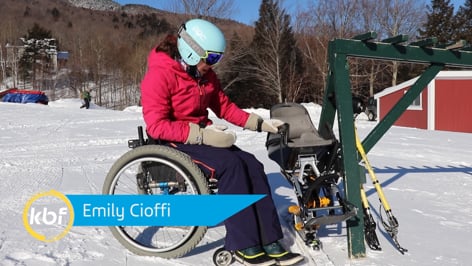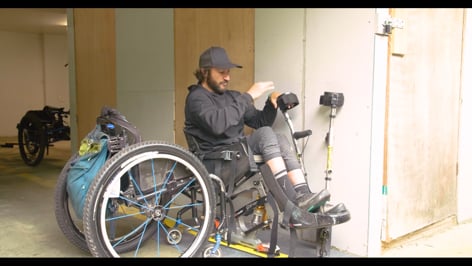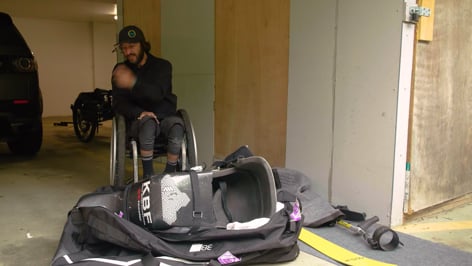
Monoskis
Best suited for people with limited to full trunk support, and who wish to ski independently.

Bi-skis
Bi-skis provide more balance support than monoskis, and are a great option for beginners and those with limited to no trunk support. Bi-skis can be used independently or with assistance.
Four-track Outriggers
Four-tracking is a great fit for people with high levels of mobility, especially standing paras. “Four-track” refers to two skis + two outrigger supports, allowing for balance support without sitting.




